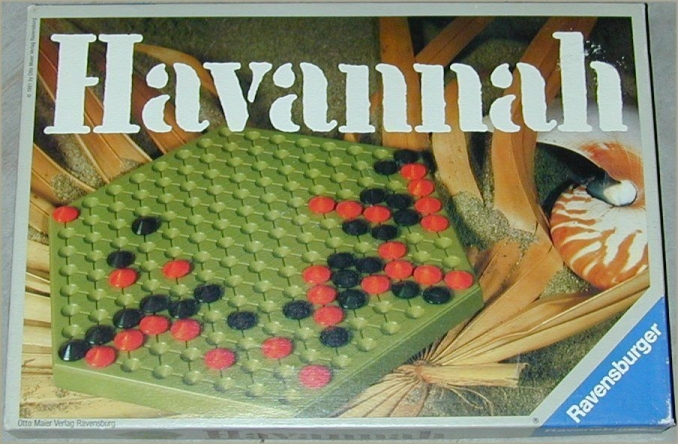
| Havannah:
the Twilight Zone by Christian Freeling
My first game was like Frankenstein's monster - all
separate parts and no life of its own. I turned to simplicity and it
didn't come much simpler than the connection game Hex. The game
showed a certain elegance but soon appeared to have no tactical finesse
and a dull strategy. As a matter of taste: I didn't like the board
either. So I started pondering the idea of connecting edges on a
hexagonal instead of a diamond shaped board. Several ideas competed
for attention. The ring, the bridge and the fork were among
them. The moment I saw them merge I knew I had my game. The club was not enough. I introduced the game at
the university's math center where huge coffee breaks were usually filled
with chess and Bridge. It immediately attracted a lot of attention,
and the year that followed may give an idea of what would happen if Go
suddenly became non-existent and were reinvented. It wouldn't even
die a modern classic - it would be still born. We used the small 169
board, some twenty players in a highly intelligent community of abstract
thinkers, and if not all participated to the same degree, yet there alone
close to a thousand games must have been played, the first year - and all
in strategic twilight. Roelof did not elaborate on strategy, but he had like all
of us noted that a drawn position, though possible, would in actual play
be something like a black tulip. Of all games that can end in a
draw, Go included, Havannah must have the smallest margin. So a good
defense would at some point inevitably turn into an attack. Not as a
style of play, but because a draw is not an option and a loss wouldn't
qualify as 'good'. He was never in a hurry and cleverly exploited
our hunger for initiative. He knew it would eventually all come down
in the center where he would have dominance. He had us swimming like
fish into a bow-net. He introduced a whole new style of play: the
best attack is a good defense! Before it was marketed by Ravensburger, they suggested to give it a theme like the Chinese Wall. I envisioned something classic like Go. The resulting compromise made it look like a nice tactical game. But it never really had any other chance than to sink into oblivion. Afterwards some exceptionally strong players emerged. But I doubt whether their numbers amount to even a few dozen worldwide today. Most buyers will have experienced the fun of basic tactics without the support of strategic clarity - twenty players had failed to get that fully focused while playing for a year on a daily basis, so what chance did they have? Nowadays the internet may change all that. |
